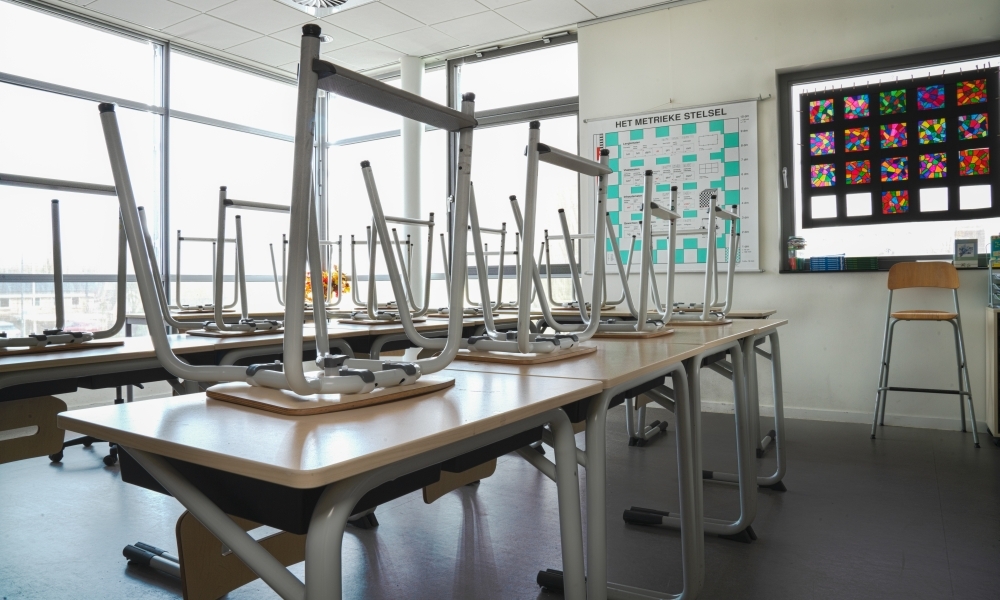Thanks for tuning in to this episode of Teacher Staffroom, where we catch you up on the latest evidence, insight, and action. I'm Dominique Russell.
As we settle in to the 2021 school year, teachers and school leaders are certainly grappling with the continued disruption caused by the COVID-19 pandemic. But how can school communities begin to implement change from things already learned from previous periods of remote teaching and learning? For instance, how has remote teaching and learning changed the way school communities collaborate? How can schools work more effectively with tutors to support students who might have fallen behind last year?
These are two topics we’ve covered at Teacher recently, and in today’s episode I’m going to take you through some of the most important points. And, like all episodes of Teacher Staffroom, I’ll be posing some questions throughout the podcast, so feel free to pause the audio as you go, gather some colleagues and discuss together how these stories could be relevant to your school context. Let's jump in.
In response to disruptions faced to learning throughout 2020, small group tutoring has emerged as a strategy to support those students who’ve fallen behind. So, what does small group tutoring look like in practice? How can you identify students who would benefit from small group tutoring? And, how can you go about choosing a tutor to best suit student needs?
We published a three-part series looking at these three issues. Dr Julie Sonnemann from the Grattan Institute provided her insights to Teacher, and made some really interesting points. On the topic of tutors building relationships with students, she had this to say.
One of the biggest reasons tutoring is seen to be successful is also because of that social relationship between the tutor and the student. If a student is struggling in the classroom, it’s important they have someone they can trust that will be there to help answer their questions in an environment where they may feel more comfortable than in a bigger class … That can make a big difference, and so the tutor really does need to put the effort in to get to know the student, to understand how the student is feeling, what they feel confident in or not confident in, and really build the student up as well to be motivated to learn.
So, that point there brings me to a question for you to think about. How do you work to build positive relationships with students in your classroom? What impact does this have on the overall engagement and success in their learning?
Now, the use of tutors to support students who have fallen behind during remote learning isn’t the only issue to emerge from the pandemic. The Knox School in Melbourne has worked with Monash University on what teachers would like to keep and leave behind from their way of working during the lengthy periods of learning from home in Victoria last year.
The data collected reveal three key areas of change: teacher agency, community collaboration, and teacher wellbeing. They spoke about these things in another series of three articles for Teacher. Staff from The Knox School and Monash University reflected on what’s emerged from their research and some considerations for the future.
The second article in the series, which looked at how real time communication redefined the nature of school community collaboration stood out to me in particular. From the research conducted in relation to community collaboration, two key findings emerged: the first was the recognition of the contribution parental support plays in nurturing quality student learning, particularly in the real time online space; and, the second was the recognition that effective community collaboration relies on trust between everyone involved in the learning process.
Here’s what they had to say about some tensions that were experienced during remote learning:
The digital communication is a double-edged sword for teachers. The parents and students had greater access to the staff, and the pressure to provide instant feedback at all hours of the day and night increased. This tension was mitigated through maintaining clear school-wide parameters, and was combined with teachers framing the expected role of parents in the online learning space.
I liked this point they made here, because I’m sure it’s something a lot of teachers and school leaders have had to work through themselves. They also went on to describe in more detail how teachers maintained parent-teacher communication while students were learning from home, and the role that reciprocal feedback played.
So, considering what The Knox School learned about teacher agency, community collaboration and teacher wellbeing during the last year, that brings me to a question for you to think about. Thinking about your own experience, what would you like to take forward into your teaching or leadership practice during 2021? What would you like to leave behind?
Now to some research news of note. You might have seen we highlighted two new research articles published in the Australian Journal of Education. The first I’d like to catch you up on looks at a study on Indigenous students and how their participation in sport is impacting their academic achievement.
There were 303 participants with a baseline age of five or six involved in the study. Parents of these children reported how frequently their child participated in organised sport, and these results were compared with the child’s scores in PAT (or Progressive Achievement Tests) and NAPLAN.
An association was found between sport participation and academic performance – the researchers said that participation in sport equated to a difference of two to seven months’ learning. So, they say these findings give room to explore how sport could be utilised to work towards closing the gap between Indigenous and non-Indigenous students.
The second research article looks at how teachers are working with students to mitigate student stress. The paper outlines the strategies used by teachers to respond to key stresses of students in order to advance their learning. Findings suggest that they’re prioritising the wellbeing of students over academic agendas.
The researchers had this to say about the strategies that were used by teachers:
Teachers proactively sought ways to create margins of time and space (mental and physical) for their students, whether by buffering the pressure of an overcrowded curriculum and data-driven audit cultures, finding physical outlets for stressed and traumatised students, or providing mental breaks and mindful time for overwhelmed students.
Now I’d like to take you to some fascinating podcast episodes we’ve published. First, our deputy editor Rebecca Vukovic caught up with Hugh Gundlach for an episode in our School Improvement series on his research on teacher attrition and retention.
In the episode, Hugh explains what attracts people to the teaching profession in the first place and shares some anecdotes from teachers who’ve found practical ways to manage the pressures of the job with success. He also shares insights into how school leaders can better support staff to feel successful in their roles. He also discussed the key reasons teachers chose to leave the profession. This is what he had to say about that:
… When teachers find they’re losing the passion for learning or working with young people is more difficult than they thought, or it’s not what they thought it would be, or that society is not really appreciating what they’re doing, they start to feel dissatisfied. So, from my research, the main [reasons] emerging were stress, burnout, emotional exhaustion – these are all separate items but they’re all connected under feeling pretty worn down and frustrated, and dissatisfied with your role. And then that leads to the second major one which is role conflict, where someone feels like they can’t do all the things expected of them to the desired standard, or where two or more aspects of a defined role may even be in opposition. So they’re the major reasons people choose to leave the profession, based on the research I’ve done so far.
So, thinking about what Hugh just said there. As a school leader, how are you supporting teachers to be more resilient and better cope with stress? When teachers leave your school, do you carry out an exit interview? How often do you speak to members of staff about their career plans and ambitions?
And finally, a highlight from me was my discussion with Dr Erin Leif and Russell Fox from Monash University about a behaviour management topic we see come up quite consistently in our annual reader survey. We spoke about how to go about identifying the underlying causes for student behaviour, and how you can effectively and respectfully respond to certain behaviour issues once you’ve identified their cause.
Here’s Erin on the nature of classroom behaviour:
And challenging behaviour, we think of it like an iceberg. What we see is the behaviour itself, in other words, what the behaviour looks like. But this doesn’t tell us a whole heck of a lot about why the student is engaging in that behaviour.
So we need to look deeper to discover the reasons why students are acting out. And there can be a whole host of different reasons why. Sometimes it might be related to factors outside of the classroom, but sometimes, actually pretty often, it has something to do with things that are happening at school as well. And when we look to discover the reason why our students are acting out, we call this identifying the function. And a big part of the work that I do is helping teachers learn to think functionally when addressing challenging behaviour. And this means, again, looking beyond just what the behaviour looks like to discover everything that lies below the surface that’s contributing to the ‘why’.
So, have a think about this question. As a teacher, reflect on the behaviour management strategies you’ve used in previous school years. What worked well, and what didn’t? Were you able to identify the underlying issues students were facing?
So, as we’ve seen, the importance of teacher wellbeing has really come to the surface during the pandemic. It’s something you’re often telling us in our annual reader survey too, so, late last year we launched our new wellbeing publication, Wellbeing by Teacher.
Each Saturday we publish a new article, aimed at helping you to improve your overall sense of wellbeing while you’re not at work. You can make sure you don’t miss an article by subscribing to the bulletin. It’s free and you’ll find the sign up form on the Teacher magazine homepage. This Saturday, you’ll be able to read about why swimming in the ocean can be good for you. And next week, watch out for our article on how cooking food can affect the nutrient content.
That's all for this episode, and you're now all caught up on the latest evidence, insight and action in education. Links to all the content and resources I've mentioned will be in the transcript of this podcast, available at our website, teachermagazine.com.



